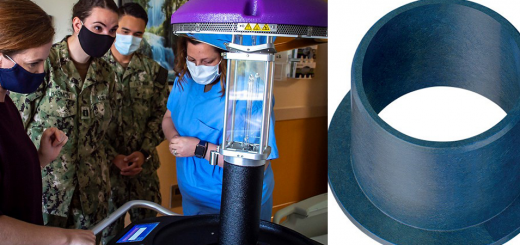Single Pair Ethernet: What is it & how does it work?
By Jared Worth
The Internet of Things (IoT) has led to a sharp increase in demand for devices with “smart” capabilities, whether it’s home appliances, industrial sensors and actuators, or even vehicles. This increase in demand has led to manufacturers developing a new type of Ethernet connection that can deliver high data transfer speeds along with power, all over a single pair of copper wires. This new Ethernet connection is aptly named Single Pair Ethernet (SPE). Read on to learn more about SPE and its potential applications.
What is single pair ethernet?
Single Pair Ethernet allows for ethernet signals to be transmitted over just a single pair of wires, rather than two or even four pairs of wires depending upon desired transmission speeds. With SPE, speeds as high as 1Gb/s can be reliably achieved in a more compact and lightweight form than standard ethernet.

SPE also enables power to be delivered to end devices continuously, known as Power over Data Line (PoDL). In concept this is similar to Power over Ethernet (PoE), but is functionally different as PoDL is delivered over the same wire pair as Ethernet signals, whereas PoE is delivered over unused wire pairs within a multi-pair cable.
Read more: Power over Ethernet: Changing the landscape of IP-enabled devices
The SPE Industrial Partner Network
In order to further advance SPE technology and reinforce industry standards regarding SPE, seven industry leaders came together in 2019 to create the SPE Industrial Partner Network. In just a few years, this network has grown significantly, with over 50 companies now a part of the network. Each company within the network jointly supports standard SPE protocols IEEE 802.3 and IEC SC46C.
The primary goal of the SPE Industrial Partner Network is to advance SPE and enable users to set up SPE networks for Industrial IoT (IIoT) applications. Since SPE enables communication between every level of the network, from the field level to the cloud, it’s the ideal infrastructure for IIoT applications.
Advantages of Single Pair Ethernet
The clearest advantage Single Pair Ethernet offers over traditional Ethernet is the reduction in cable size and weight. SPE cables can reduce installation size by 25% and weight by 35% over standard Ethernet cabling. This won’t be a major factor in all applications, but in the automotive and railway industries, any potential weight savings are vital.

White Paper: Single Pair Ethernet: For fast and direct communication with machines
Another benefit of SPE is its ability to communicate across standard industrial Ethernet protocols like Profinet, EtherCAT and Ethernet/IP. This makes implementing SPE much simpler, as existing control devices can inherently interface with SPE networks through field switches.
Working within existing protocols makes it more likely new employees are already familiar with the technology and reduces the learning curve for these employees. This helps reduce training costs and makes it easier for companies to find qualified employees.
Applications of Single Pair Ethernet
Not all existing Ethernet applications are going to benefit from making the transition to Single Pair Ethernet. In large networks already using standard Ethernet, primarily in expansive factory or warehouse applications, the time and cost associated with implementing Single Pair Ethernet would be too high to justify making the switch.
However, for other applications — particularly those within the automotive and railway industries — SPE offers significant benefits that make it ideal to use. Weight reduction is the most impactful of these, as weight can affect fuel & energy efficiency, leading to significant cost savings over the life of a vehicle.
Another area where SPE can truly shine is within “smart buildings”. Smart buildings bring together various systems like security, lighting, HVAC, and more together under a single network infrastructure. The data collected from these systems can then be analyzed by AI and used to respond to users’ needs and optimize resource usage.

These devices are not only connected to the network through SPE, but receive power as well thanks to Power over Data Line. SPE cables are able to service these applications while reducing cabling needs, which is essential in large buildings that may have hundreds or even thousands of sensors & other devices on a single network.
Conclusion
Single Pair Ethernet has emerged as a groundbreaking technology, responding dynamically to the escalating demands of IIoT applications. By enabling high-speed data transfer and power delivery over a single pair of copper wires, SPE stands out as a versatile solution with applications ranging from industrial settings to smart buildings. The reduction in cable size and weight, coupled with compatibility with existing industrial Ethernet protocols, makes SPE an attractive choice for sectors such as automotive, railway, and smart infrastructure. The collaborative efforts of the SPE Industrial Partner Network underline the commitment to advancing this technology and establishing robust industry standards. As we witness the continued growth of the SPE ecosystem, it becomes clear that Single Pair Ethernet is not merely a technological advancement; it’s a key enabler for the seamless integration of smart capabilities into diverse environments, paving the way for a more connected and efficient future.
Questions about single pair ethernet applications or products? Contact a cable expert, or call us at 800-965-2496 for assistance.



